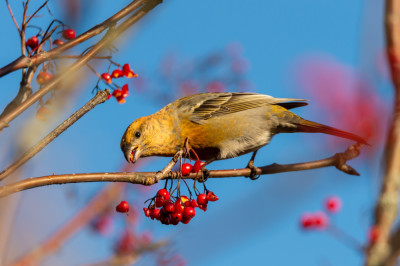1. The Basics of Birdsongs
Birdsongs are not random; they are structured and meaningful. Understanding some of the basic elements of birdsongs can provide insights into their communication:
-
Repertoire: Each bird species has its repertoire of songs, which may include different melodies and calls used in specific contexts.
-
Purpose: Birds sing for various reasons, such as attracting a mate, defending territory, warning of danger, and communicating within their flock.
-
Vocal Learning: Many songbirds are vocal learners, meaning they acquire their songs through exposure to adult conspecifics (birds of the same species). This learning process often occurs during the early stages of life.
2. Attracting a Mate
One of the primary functions of birdsong is mate attraction. Male birds use their songs to demonstrate their fitness and attract potential mates. The complexity, duration, and consistency of a male's song can indicate his health and genetic quality. Female birds often select mates based on the quality of their songs.
3. Defending Territory
Birds are territorial creatures, and songs play a critical role in defining and defending their territories. A singing bird is sending a clear message to intruders that the area is already claimed. Songs serve as a deterrent to other males of the same species and can reduce the need for physical confrontations.
4. Communication Within Flocks
Within a flock or family group, birdsongs are essential for communication:
-
Parent-Offspring Communication: Parents and chicks often have specific calls to locate each other, especially when food is involved.
-
Coordinated Movement: Birds may use calls to signal the group to take flight, find food, or alert others to potential threats.
5. Emotion and Expression
Birds can also use songs to express their emotions. For example:
-
Joyful Song: A bird's cheerful and exuberant song often signals contentment or excitement.
-
Sad or Distressed Calls: Conversely, birds may emit calls or songs when distressed, injured, or separated from their flock.
6. Alarm Calls and Predation Alerts
Many birds have distinct alarm calls to warn others of potential dangers, such as predators like hawks or snakes. These alarm calls can vary in intensity and specificity, helping the flock respond appropriately to the threat.
7. Species-Specific Songs
Each bird species has its unique songs, which can vary in complexity, pitch, rhythm, and tempo. Birdwatchers and ornithologists often use these songs to identify species during birdwatching expeditions.
8. Cultural and Regional Variations
Just as human languages vary by region and culture, birdsongs can also differ among populations of the same species. These regional variations can result from genetic differences, environmental factors, and cultural transmission within bird populations.
Conclusion
The art of birdsong is a fascinating and multifaceted aspect of the natural world. It serves as a means of communication, expression, and survival for our avian friends. By appreciating and understanding the meanings behind birdsongs, we can gain insight into the rich tapestry of life in the animal kingdom and connect with the natural world on a deeper level. So, the next time you hear the enchanting melodies of birds in your surroundings, take a moment to listen and appreciate the intricate language they share with us.







